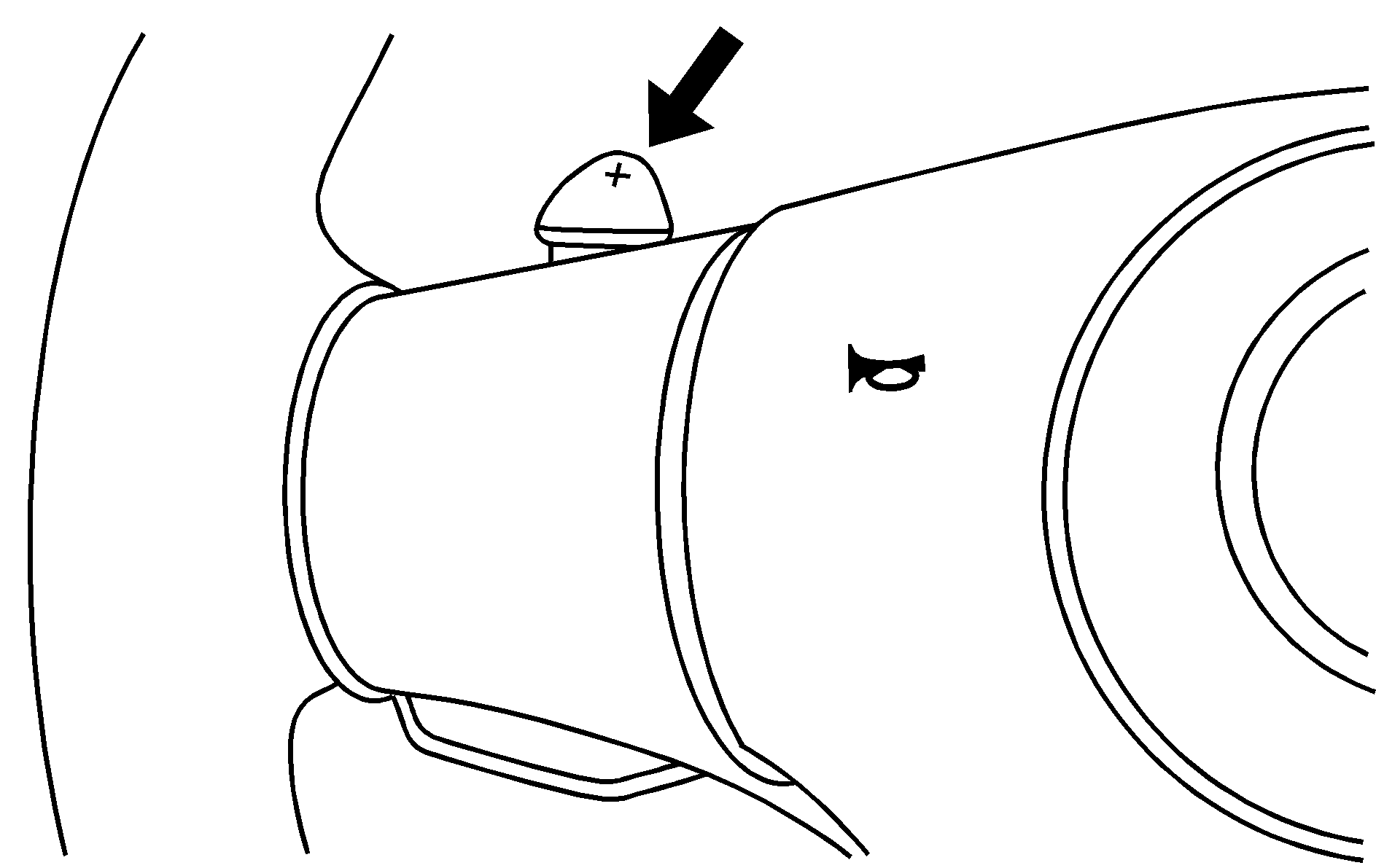
There are several different positions for the shift lever.
P (Park): This position locks the rear wheels. It is the best position to use when starting the engine because the vehicle cannot move easily.Caution: It is dangerous to get out of the vehicle if the shift lever is not fully in P (Park) with the parking brake firmly set. The vehicle can roll.
Do not leave the vehicle when the engine is running unless you have to. If you have left the engine running, the vehicle can move suddenly. You or others could be injured. To be sure the vehicle will not move, even when you are on fairly level ground, always set the parking brake and move the shift lever to P (Park). See Shifting Into Park .Be sure the shift lever is fully in P (Park) before starting the engine.
The vehicle has an automatic transmission shift lock control system. You have to fully apply the brakes and then press the shift lever button before you can shift from P (Park) when the vehicle is running. If you cannot shift out of P (Park), ease pressure on the shift lever and push the shift lever all the way into P (Park) as you maintain brake application. Then press the shift lever button and move the shift lever into another gear. See Shifting Out of Park .
R (Reverse): Use this gear to back up.Notice: Shifting to R (Reverse) while the vehicle is moving forward could damage the transmission. The repairs would not be covered by the vehicle warranty. Shift to R (Reverse) only after the vehicle is stopped.
To rock the vehicle back and forth to get out of snow, ice, or sand without damaging the transmission, see If Your Vehicle is Stuck in Sand, Mud, Ice, or Snow .
N (Neutral): In this position, the engine does not connect with the wheels. To restart the engine when the vehicle is already moving, use N (Neutral) only. If the vehicle needs towing, see Towing Your Vehicle .Caution: Shifting into a drive gear while the engine is running at high speed is dangerous. Unless your foot is firmly on the brake pedal, the vehicle could move very rapidly. You could lose control and hit people or objects. Do not shift into a drive gear while the engine is running at high speed.
Notice: Shifting out of P (Park) or N (Neutral) with the engine running at high speed may damage the transmission. The repairs would not be covered by the vehicle warranty. Be sure the engine is not running at high speed when shifting the vehicle.
D (Drive): This position is for normal driving. It provide the best fuel economy. If you need more power for passing, and you are:| • | Going less than about 35 mph (56 km/h), push the accelerator pedal about halfway down. |
| • | Going about 35 mph (56 km/h) or more, push the accelerator all the way down. |
Downshifting the transmission in slippery road conditions could result in skidding, see "Skidding" under Loss of Control .
S (Sport Mode): When in S (Sport Mode), the transmission will work as an automatic until you use the Manual Paddle Shift Controls, which activates driver manual gear selection. See Manual Paddle Shift later in this section. While in S (Sport Mode), the transmission's computer determines when the vehicle is being driven in a competitive manner and will select and hold the transmission in lower gears and have more noticeable upshifts for sportier vehicle performance.Manual Paddle Shift
While in the S (Sport Mode) position, the paddles located on the steering wheel can be used to manually up-shift or down-shift the transmission.

While in S (Sport Mode), push the paddle above the steering wheel spokes to up-shift to the next gear, or pull on the paddle behind the steering wheel spokes to down-shift to the next gear.
To use the system, shift from P (Park) position to S (Sport Mode) while stopped and with the engine running, or from D (Drive) with the vehicle moving. When accelerating the vehicle from a stop in snowy and icy conditions, you may want to shift to 2 (Second) or 3 (Third) gear. A higher gear allows you to gain more traction on slippery surfaces. If traction control is active, upshifts are delayed to increase your control of the vehicle. See Traction Control System (TCS) .
While the Manual Paddle Shift gear selection system is active, the transmission will automatically downshift through the gears as the vehicle slows. The transmission will select 2 (Second) gear as the vehicle stops. From a stop, the vehicle will start from and hold 2 (Second) gear unless the driver manually paddle shifts into a different gear or selects D (Drive). The driver can select 1 (First) gear for maximum acceleration from a stop.

When using the Manual Paddle Shift feature while in S (Sport Mode) , the current gear will be displayed in the Driver Information (DIC), or the Head-Up Display (HUD), if the vehicle has either of these features.
If the vehicle has a Navigation system, see "Head-Up Display (HUD)" in the Index of the navigation manual.
The Manual Paddle Shift system will not allow either an up-shift or a down-shift if the vehicle speed is too fast or too slow, nor will it allow a start from 4 (Fourth) or higher gear
If up-shifting does not occur when needed, vehicle speed will be limited to protect the engine.
The transmission will also automatically down-shift as the vehicle slows down and comes to a stop.
When the transmission gear does not respond to a shift change, the DIC will show an X over the gear display.

When a requested shift is denied due to the speed restrictions shown, the DIC will momentarily show an X over the gear display and a chime will sound.
If the vehicle has a HUD, and the transmission gear does not respond to a shift change, a chime will sound and the HUD will momentarily show an X over the gear display.
Manual Paddle Shift operation is available for use with Cruise Control. See Cruise Control for more information.
The vehicle speeds required for Manual Paddle Shift up-shifts depend on several vehicle inputs, which will vary the allowed up-shift speed by a few mph (km/h).
| • | Up-shifts to 4 (Fourth) gear require approximately 22 mph (35 km/h). |
| • | Up-shifts to 5 (Fifth) gear require approximately 28 mph (45 km/h). |
| • | Up-shifts to 6 (Sixth) gear require approximately 41 mph (65 km/h). |
To prevent damage to the powertrain, Manual Paddle downshifts to a lower gear cannot be done above certain speeds. The maximum speed allowed for downshifting of gears 1 (First) through 4 (Fourth) are:
| • | Into 4 (Fourth) gear over 168 mph (270 km/h) |
| • | Into 3 (Third) gear over 124 mph (200 km/h) |
| • | Into 2 (Second) gear over 81 mph (130 km/h) |
| • | Into 1 (First) gear over 45 mph (72 km/h). |
If the driver does not request an upshift as the engine speed approaches fuel shut off RPM, the engine speed will be limited to protect the engine. See Tachometer for more information.
